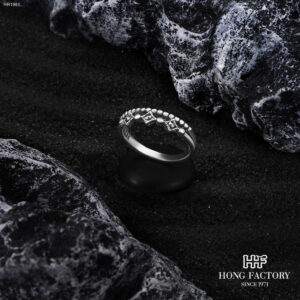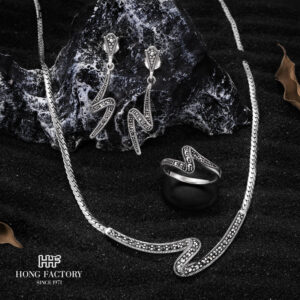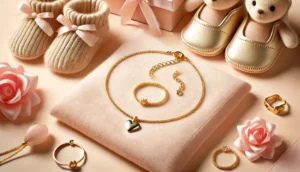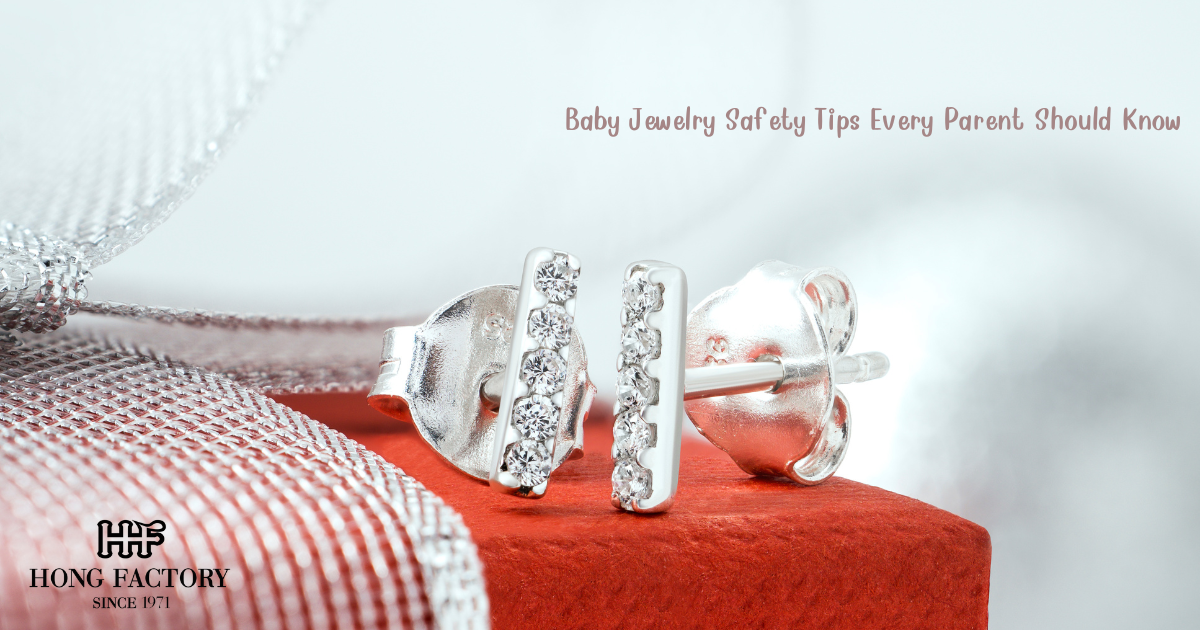Jewelry for babies can be a meaningful gift, a cultural tradition, or a stylish accessory. However, safety should always be the top priority when introducing any type of jewelry to infants or young children.
From bracelets to earrings and necklaces, baby jewelry must meet strict standards to ensure it poses no risk. Here are the most important baby jewelry safety tips every parent should keep in mind. is sterling silver expensive

Why Baby Jewelry Can Be Risky
Before exploring safe jewelry options, it’s essential to understand the potential dangers:
- Choking Hazard: Small parts like beads or charms can detach and become a choking risk.
- Strangulation Hazard: Necklaces, anklets, or long chains can wrap around a baby’s neck or limbs.
- Skin Irritation or Allergies: Some metals or coatings can cause rashes or allergic reactions, especially on sensitive baby skin.
- Ingestion of Harmful Materials: Poor-quality jewelry may contain toxic elements like lead or cadmium.
Choose Age-Appropriate Jewelry
Jewelry designed specifically for babies follows stricter safety guidelines. When shopping, look for:
- Jewelry labeled for infants or toddlers
- Certified non-toxic materials
- Smooth edges and secure clasps
- No loose beads or detachable parts
Avoid giving jewelry meant for older children or adults to babies, even temporarily.
Materials Matter: Go Hypoallergenic
Always choose jewelry made from hypoallergenic and non-toxic materials. Safe options include:
- Sterling Silver (marked 925)
- 14K or 18K gold
- Medical-grade stainless steel
- Silicone teething jewelry (for supervised use only)
Avoid nickel, low-grade plastics, and cheap costume jewelry, which are more likely to cause irritation or contain harmful chemicals.
Prioritize Comfort and Fit
Jewelry should never be too tight or too loose. A snug but comfortable fit reduces the chance of it slipping off or cutting off circulation.
- Bracelets and anklets should have a safety chain or adjustable clasp.
- Earrings should have flat backs and be lightweight.
- Necklaces are generally discouraged for unsupervised wear, especially while sleeping.

Supervision is Key
Babies should never wear jewelry unsupervised. Remove all jewelry during sleep, bath time, and physical play. This prevents accidental injury or ingestion.
Use jewelry primarily for special occasions and always watch closely when your baby is wearing it.
Check for Recalls and Certifications
Before purchasing, check if the brand or product has any safety certifications or past recall history. Reputable baby jewelry brands often comply with safety regulations from organizations like:
- CPSC (Consumer Product Safety Commission)
- ASTM International
- EN71 safety standard (for European products)
This ensures the jewelry has passed testing for choking, toxicity, and structural integrity.
Clean Jewelry Regularly
Babies explore with their mouths, and jewelry can easily accumulate dirt, bacteria, or saliva. Clean baby jewelry frequently using gentle, baby-safe cleaning methods such as:
- Warm water with mild soap
- A soft cloth (avoid abrasive brushes)
Avoid harsh chemicals and sterilizers that may damage the materials.
Best Jewelry Types for Babies
If you’re set on adorning your little one, here are some of the safest options when used with proper supervision:
- ID Bracelets: Lightweight and engraved with the child’s name or emergency contact. Ideal for special events.
- Tiny Stud Earrings: If ears are pierced, opt for screw-back hypoallergenic studs.
- Baptism or Christening Jewelry: Designed specifically for infants and used for ceremonial purposes.

Avoid Popular But Risky Trends
Some trendy baby jewelry styles should be avoided due to high risks:
- Amber teething necklaces: These are not proven to reduce teething pain and pose choking and strangulation hazards.
- Long charm bracelets: Easily tangled or broken.
- Dangly earrings: May get pulled, causing injury.
Choose simple, secure, and minimal designs instead.
Baby jewelry can be a beautiful keepsake or cultural tradition but safety should always come first. By choosing the right materials, ensuring proper fit, supervising use, and avoiding risky designs, you can enjoy adorning your baby without compromising their well-being. When in doubt, consult with a pediatrician or child safety expert before introducing any jewelry to your infant.




